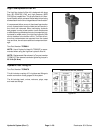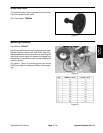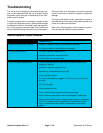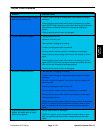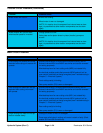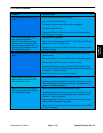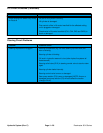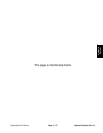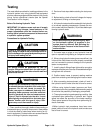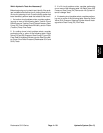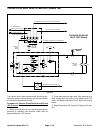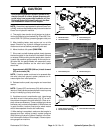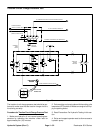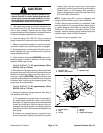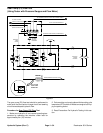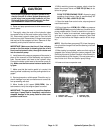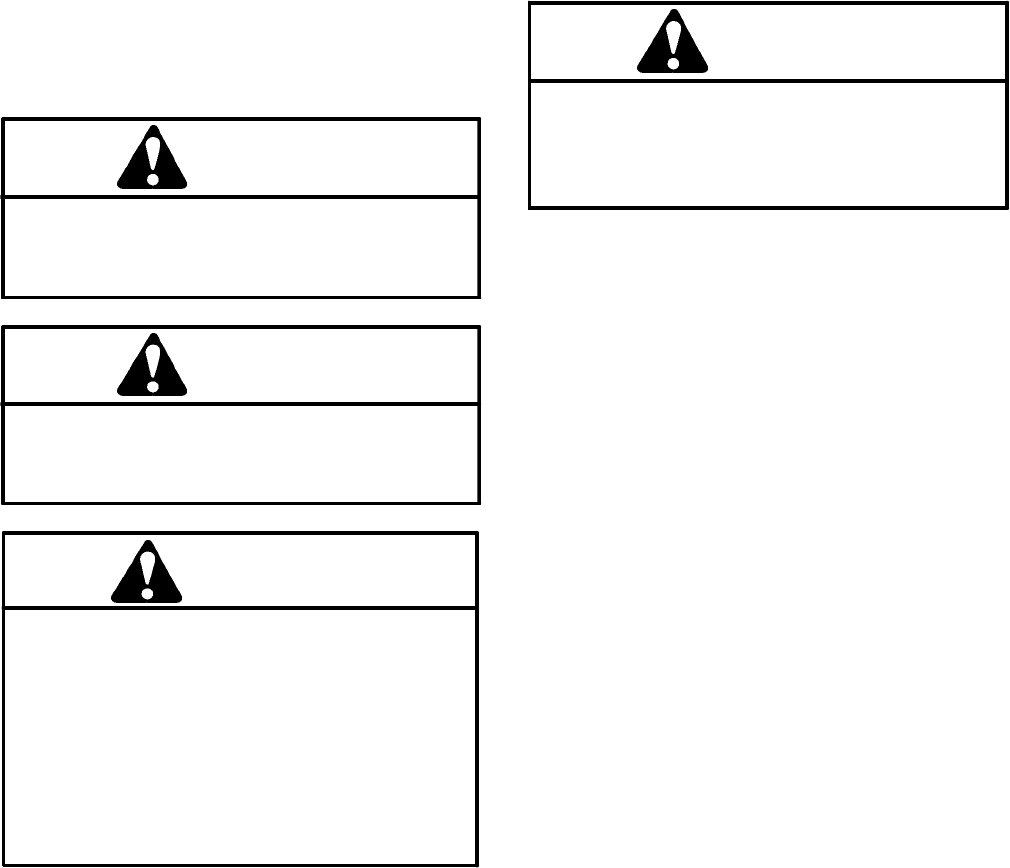
Reelmaster 5010 SeriesHydraulic System (Rev. C) Page 4 -- 28
Testing
The most effective method for isolating problems in the
hydraulic system is by using hydraulic test equipment
such as pressure gauges and flow metersin the circuits
during various operational checks (see the Special
Tools section in this chapter).
Before Performing Hydraulic Tests
IMPORTANT: All obvious areas such as oil supply,
oil filter, binding linkages, loose fasteners or im-
proper adjustments must be checked before as-
suming that a hydraulic component is the source of
a hydraulic system problem.
Precautions for Hydraulic Testing
CAUTION
Failure to use gauges with expected pressure
(psi) rating as listed in test procedures could re-
sultindamagetothe gaugeandpossibleperson-
al injury from leaking hot oil.
CAUTION
All testing should be performed by two (2)
people.One personshouldbe intheseat tooper-
ate the machine and the other should read and
record test results.
WARNING
Keepbodyand handsawayfrompinholeleaks
or nozzles that eject hydraulic fluidunder high
pressure. Do not use hands to search for
leaks; use paper or cardboard. Hydraulic fluid
escaping under pressure can have sufficient
force to penetrate the skin and cause serious
injury. If fluid is injected into the skin, it must
be surgically removed within a few hours by a
doctor familiar with this type of injury. Gan-
grene may result from such an injury.
1. Clean machine thoroughly before disconnecting or
disassembling anyhydraulic components.Always keep
in mind the need for cleanliness when working on hy-
draulic equipment.Contamination can causeexcessive
wear or binding of hydraulic components.
2. Review all test steps before starting the test proce-
dure.
3. Before testing, check all control linkages for improp-
er adjustment, binding or broken parts.
4. All hydraulictests should be made with thehydraulic
oil at normal operating temperature. Operate the ma-
chineunder loadforat leastten (10)minutesbefore per-
forming hydraulic tests.
WARNING
Before disconnecting or performing any work
on the hydraulic system, all pressure in the
system must be relieved. See Relieving Hy-
draulic System Pressure in the General Infor-
mation section.
5. Put metal caps or plugs on any hydraulic lines left
open or exposed during testing or component removal.
6. When usinghydraulic tester (pressureand flow), the
inlet and the outlet hoses must be properly connected
and not reversed to prevent damage to the hydraulic
tester or components.
7. Install hydraulic fittings finger tight and far enough to
makesurethattheyarenotcross--threadedbeforetight-
ening them with a wrench.
8. Position tester hoses to prevent rotating machine
parts fromcontacting anddamaging thehoses ortester.
9. After connecting test equipment, check oil level in
the hydraulic tank to make sure that oil level is correct.
10.When using hydraulic tester (pressure and flow),
opentesterloadvalve completelybeforestartingengine
to minimize the possibility of damaging components.
11.Theenginemustbein goodoperatingcondition.Use
a phototac when performing a hydraulic test. Engine
speed can affect the accuracy of the tester readings.
Check actual speed of the pump when performing hy-
draulic flow tests.
12.After hydraulic test procedures have been com-
pleted, check oil levelin the hydraulic tank to make sure
that oil level is correct.



